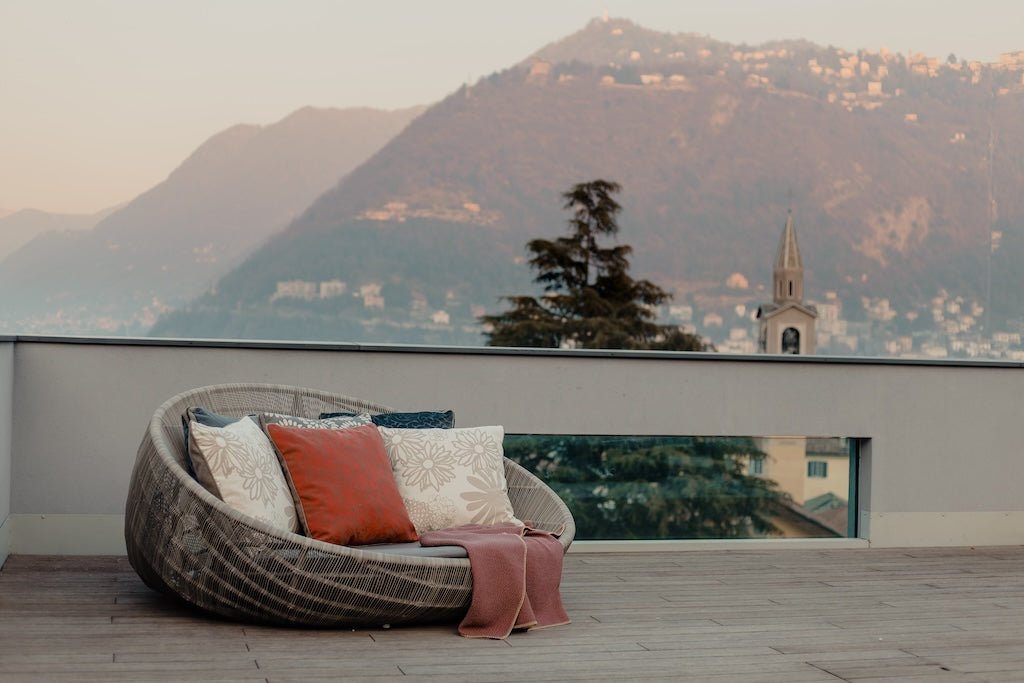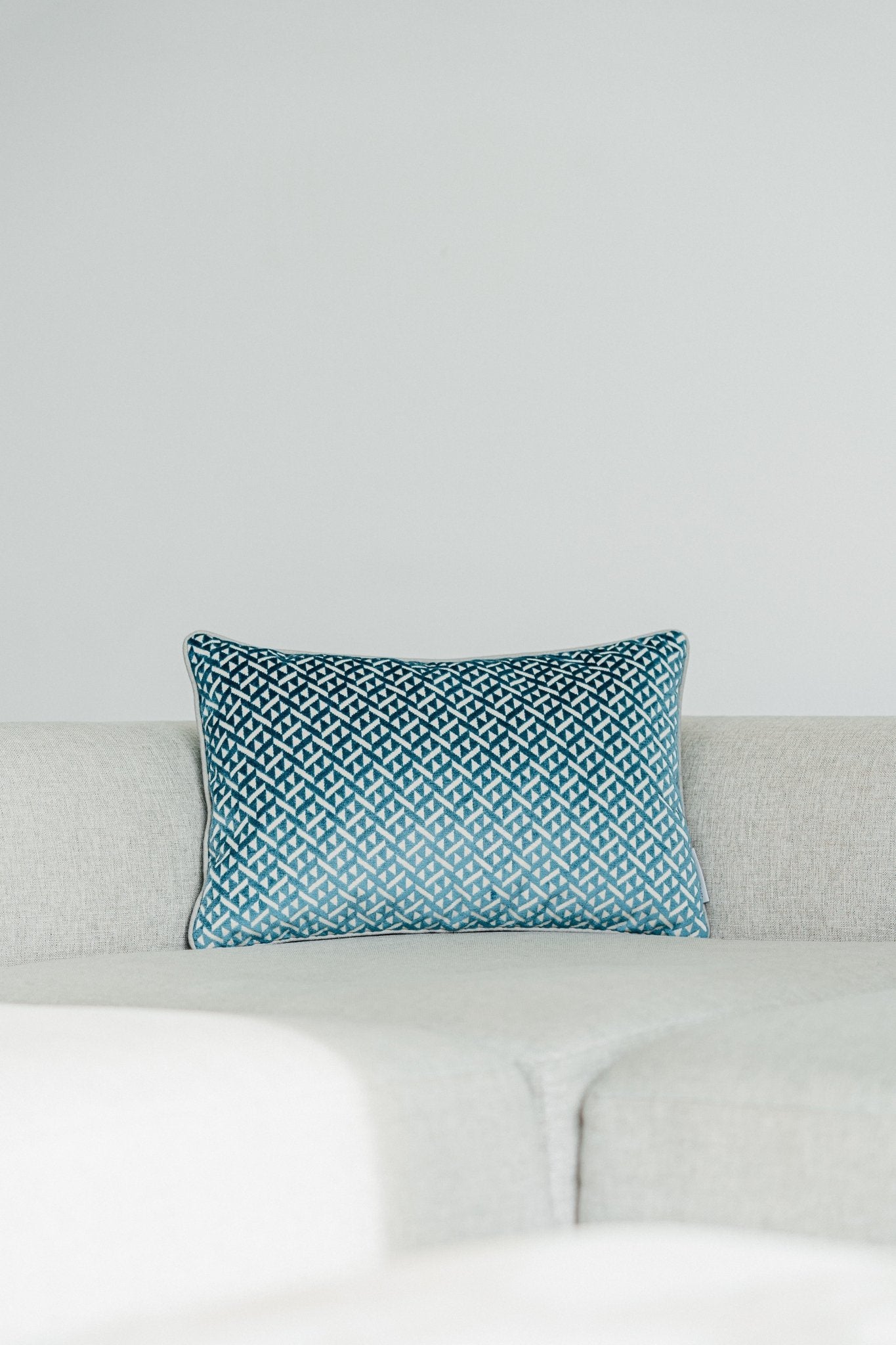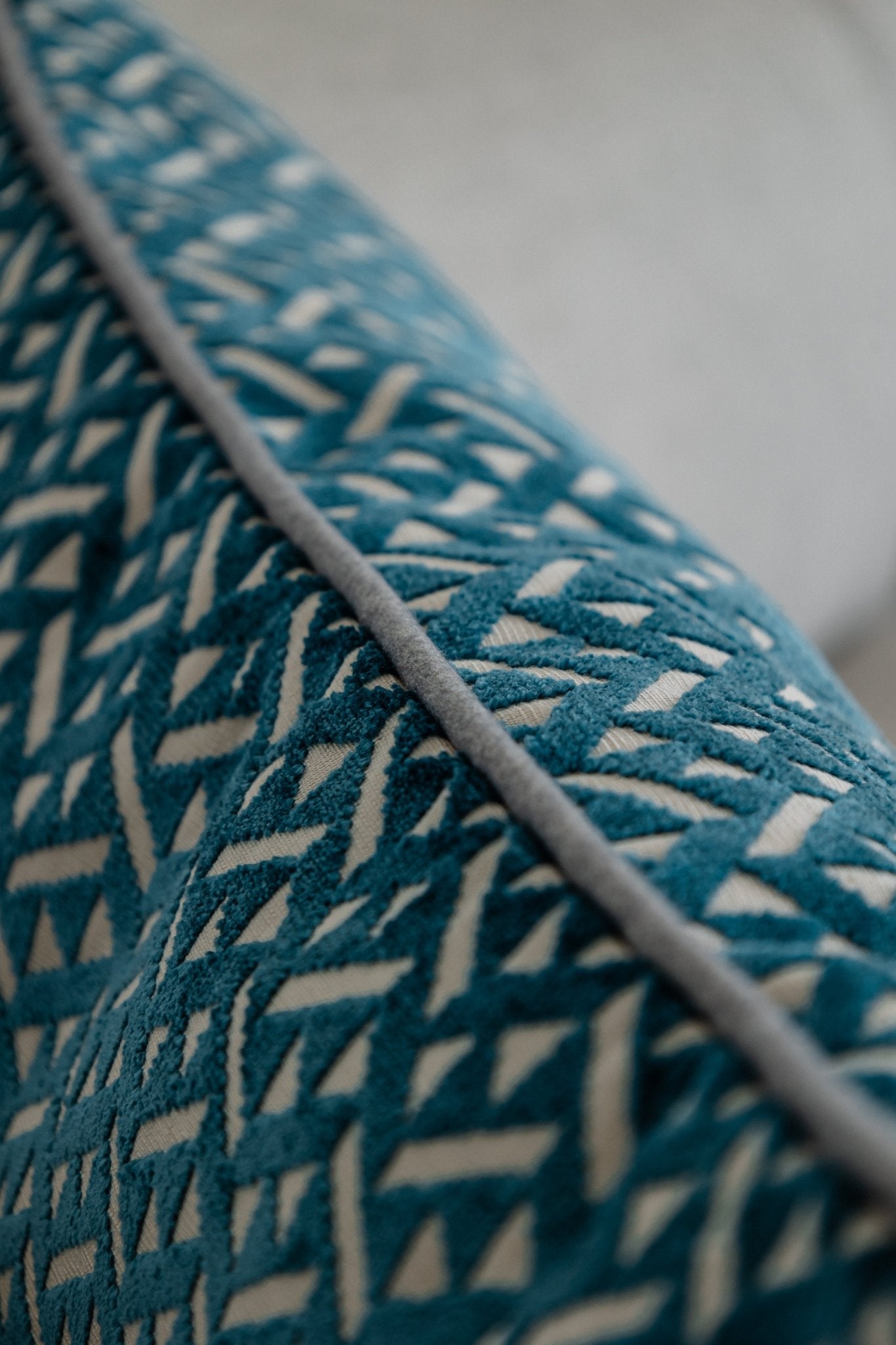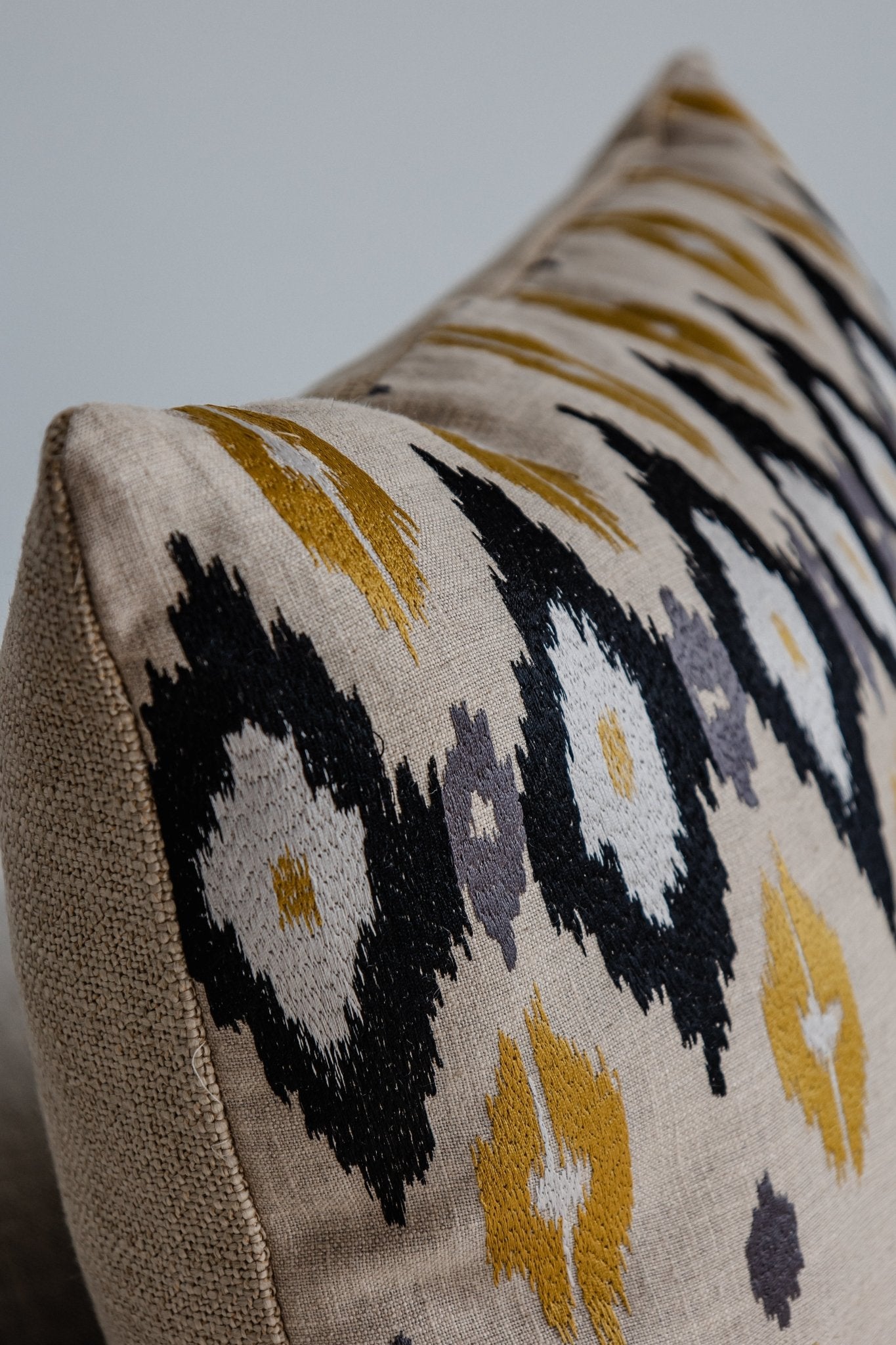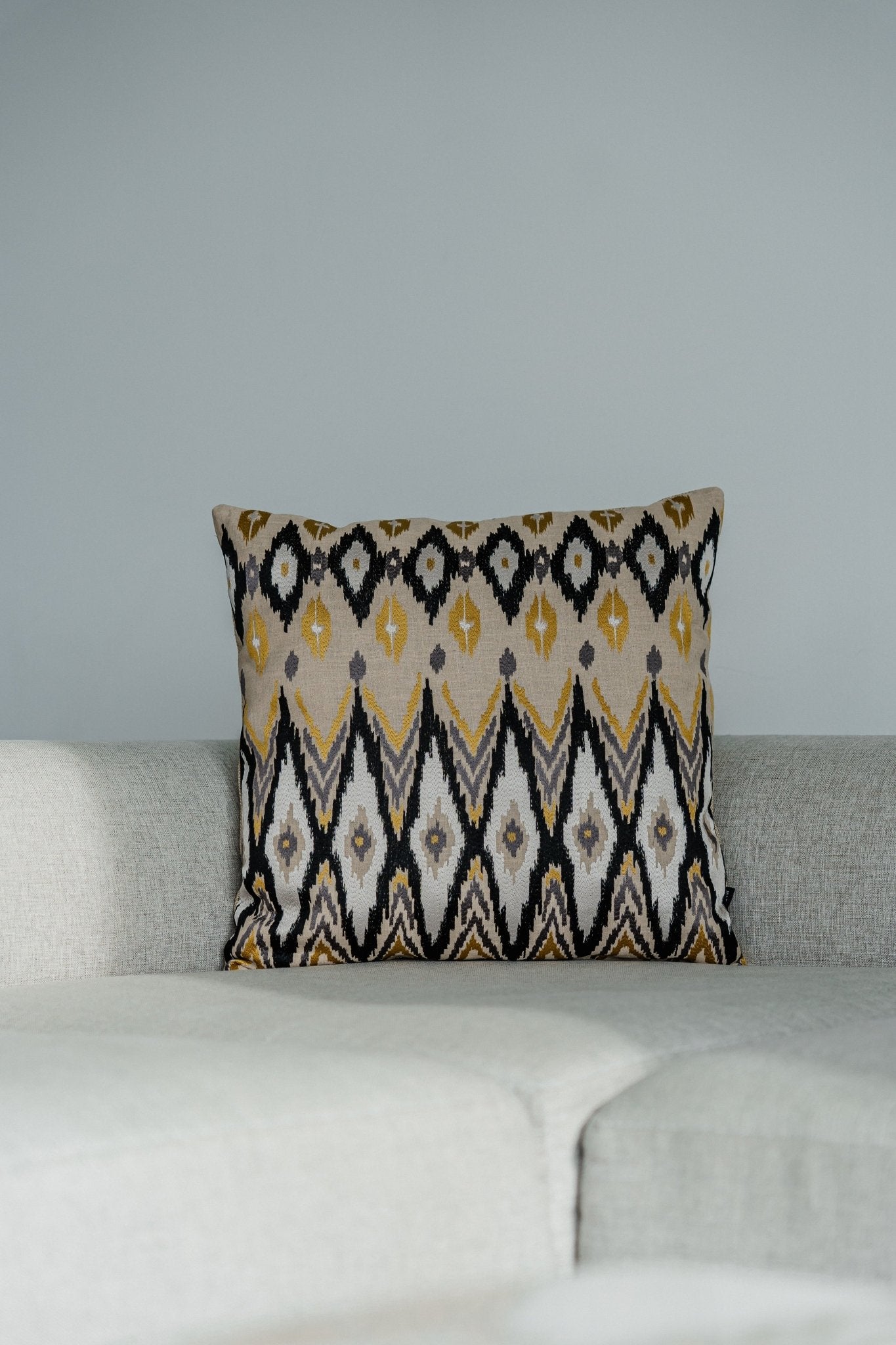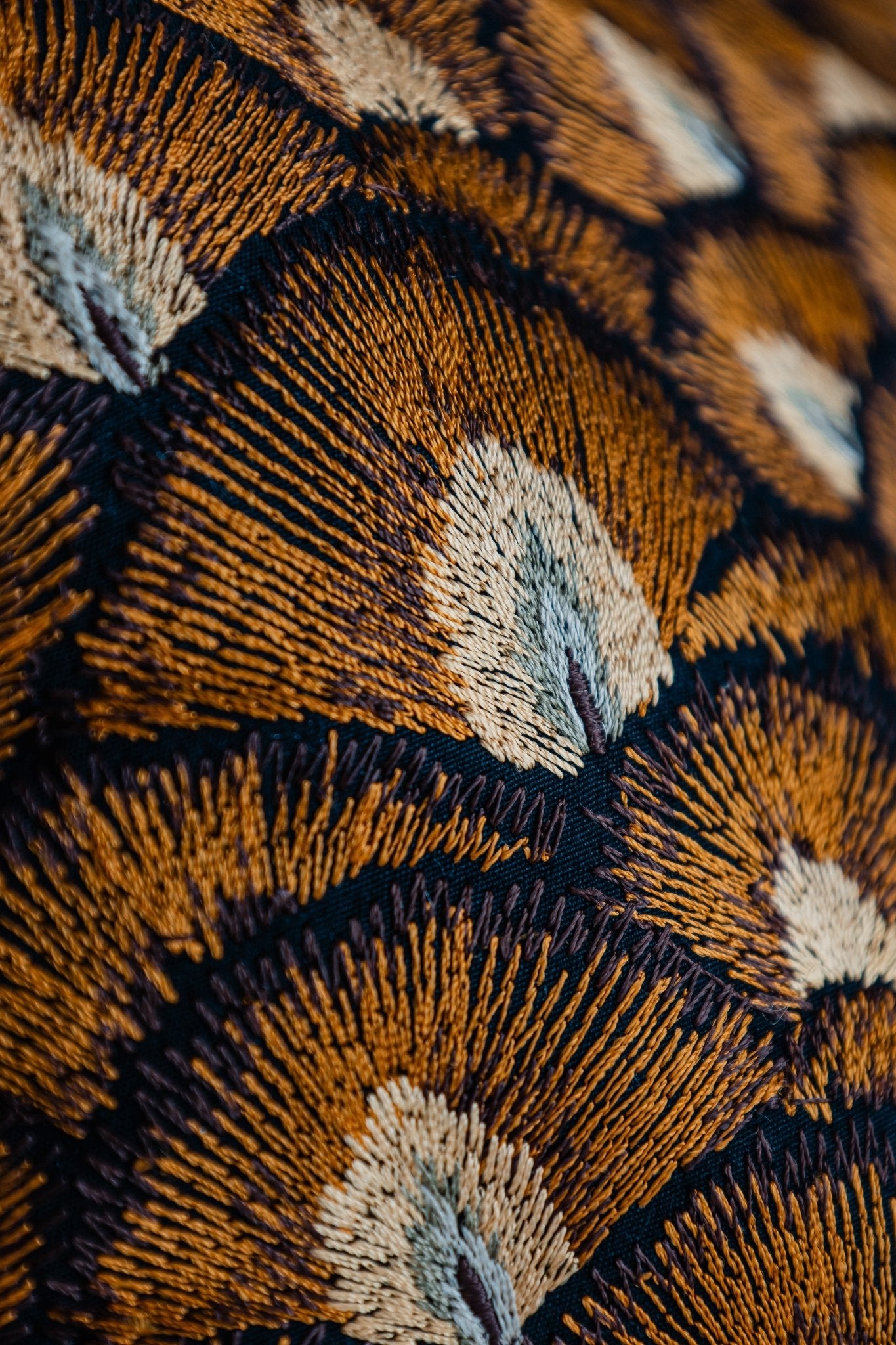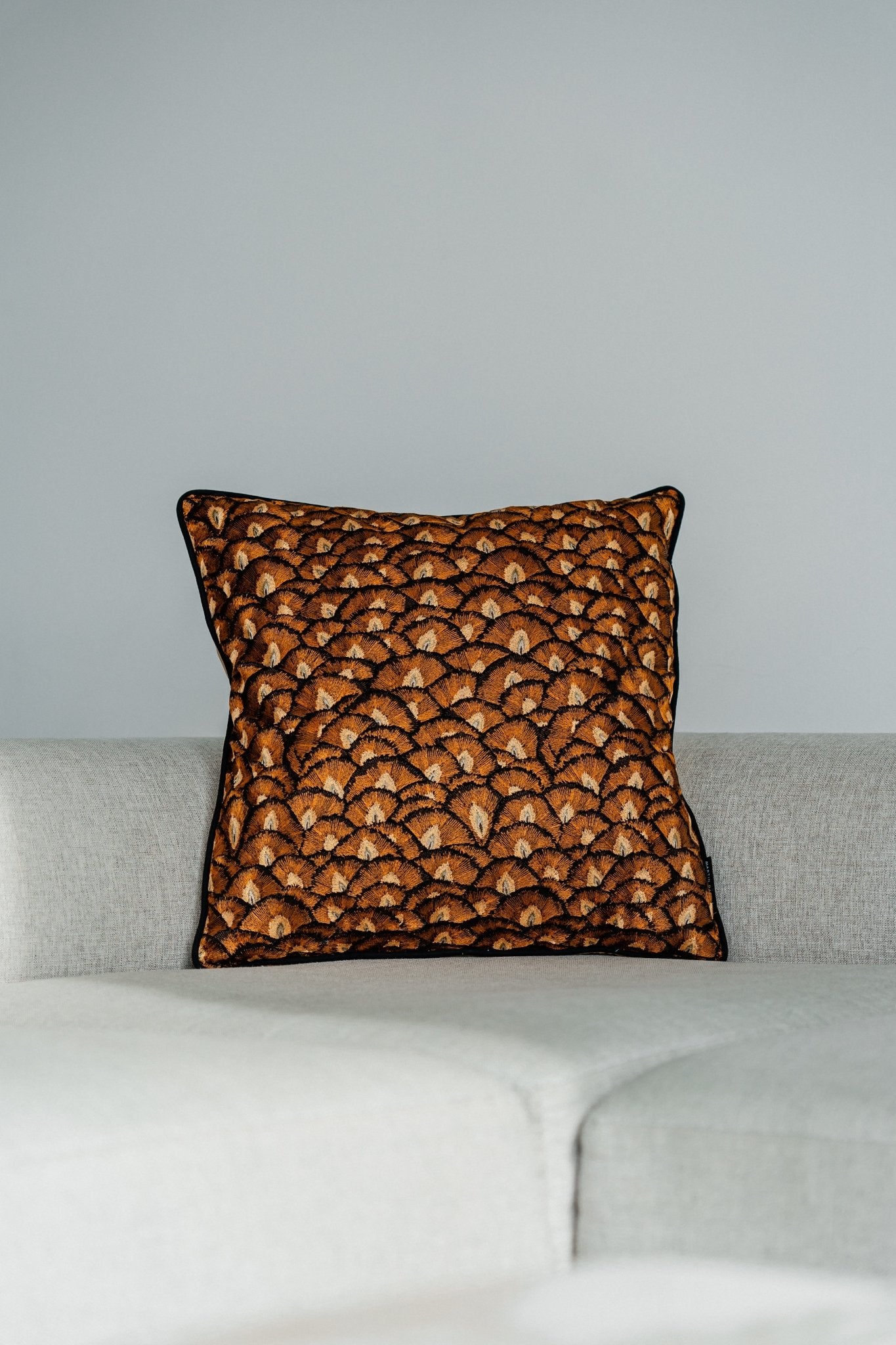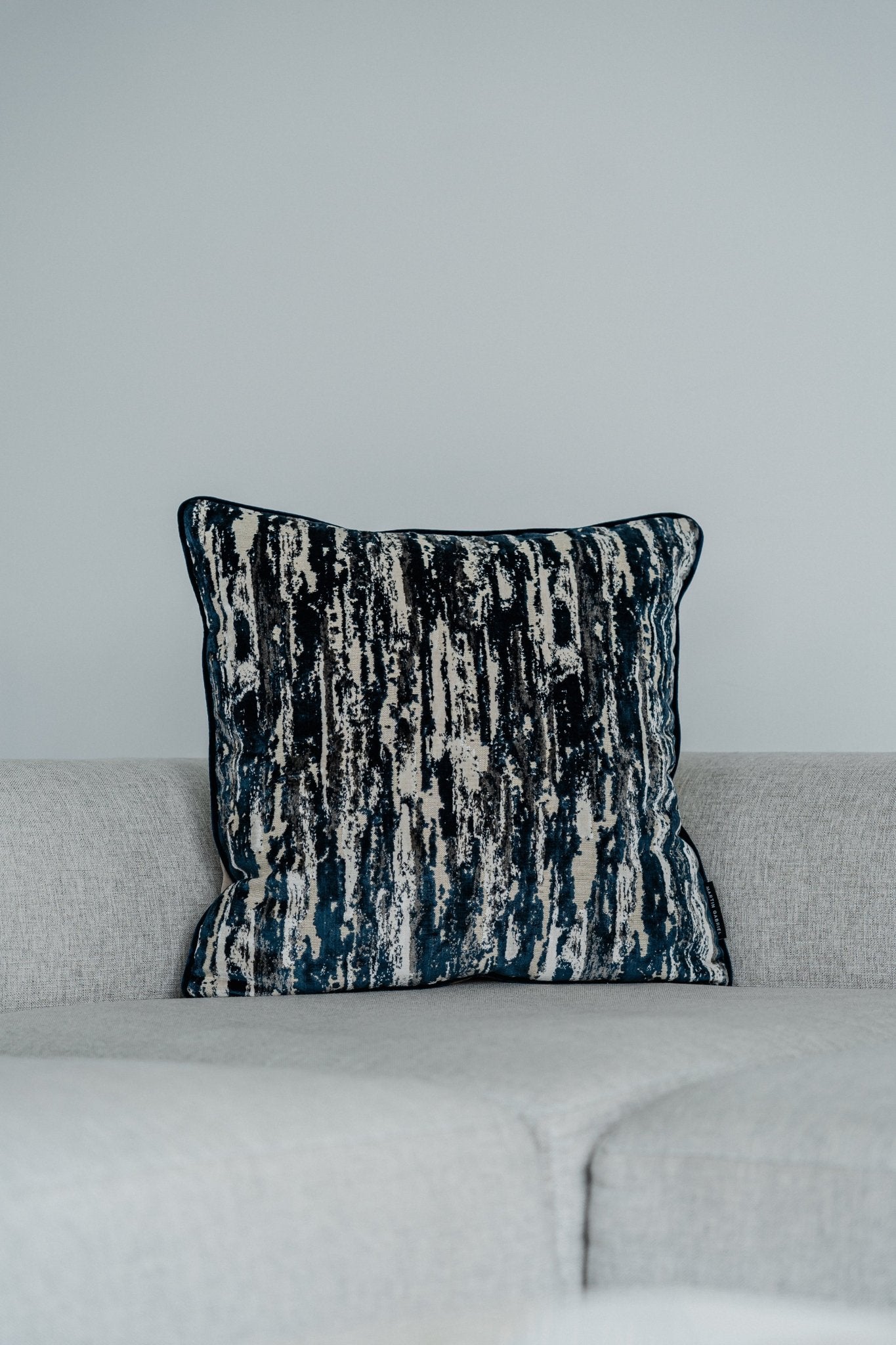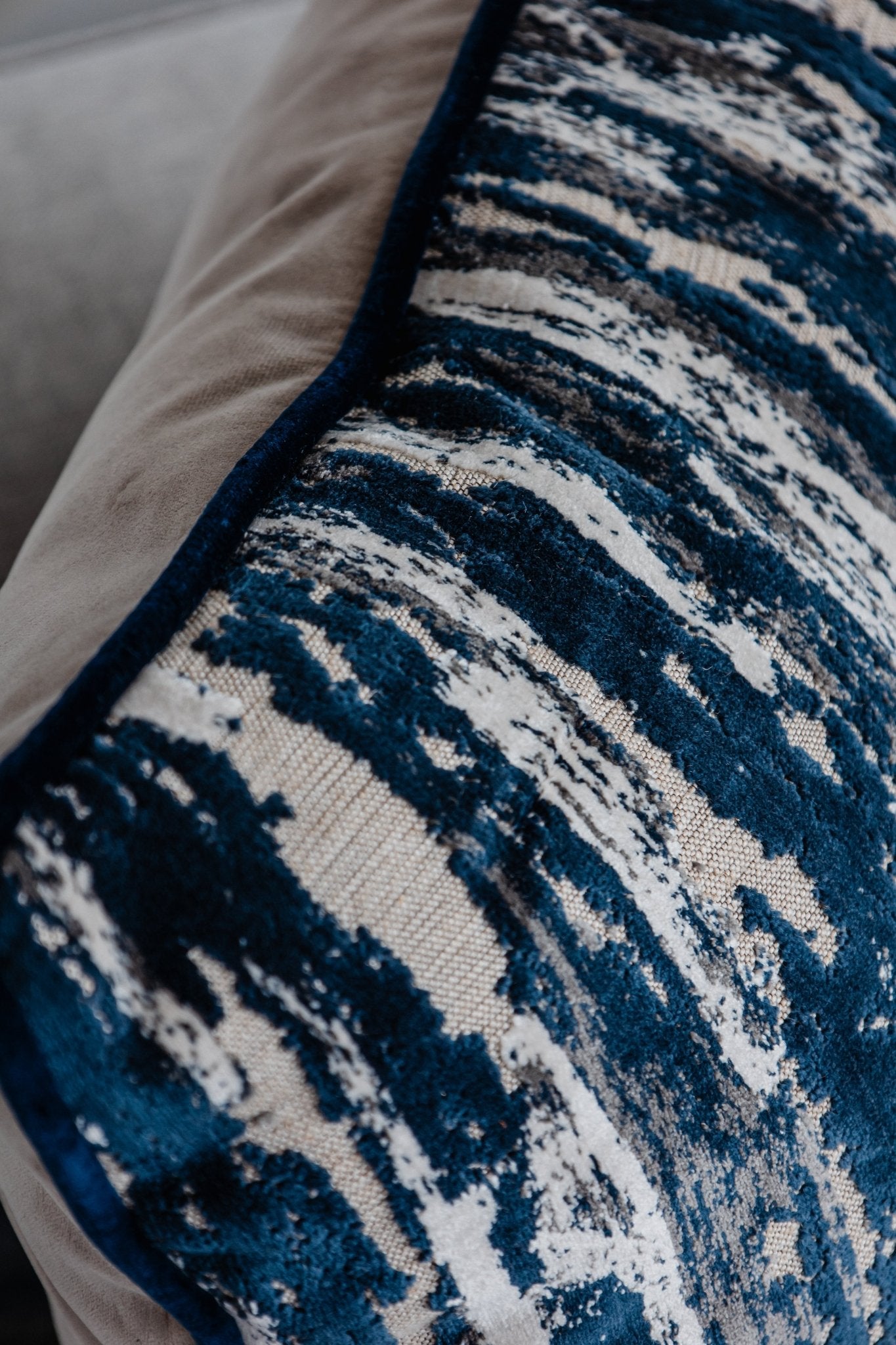In 2025, rugs will be more than just floor coverings. They create sanctuaries, zone open floor plans, add character to rooms, and improve acoustics. Natural materials, soft pastels, clean lines, and nostalgic vintage looks form a repertoire that supports both minimalist and expressive interiors. Rugs play a central role in many German homes, bringing warmth and sensuality to often cool materials like concrete, tiles, or parquet.
A closer look reveals how closely material, color, texture, and form interact. Some trends appear subtle and understated, while others set bold accents. Both have their place, often even in the same room.
Materials that convince now
The desire for natural materials is shaping the selection like never before. Virgin wool leads the way, closely followed by jute, sisal, and hemp. Lyocell/Tencel is also gaining importance when a silky, shimmering surface is required. Recycled PET is also becoming established for indoor-outdoor rugs, which are easy to care for and robust.
Wool scores points for its elasticity, natural stain resistance, and a pleasant, temperature-regulating feel. Jute and sisal offer a rustic, sturdy texture that provides a grounding touch in modern homes. Hemp is extremely durable, slightly coarse in appearance, but timeless. Lyocell/Tencel delivers shine and color brilliance, but requires more care. Recycled PET surprises with its soft feel and resistance to moisture, making it ideal for kitchens, balconies, or dining areas.
Certifications are important to many shoppers. In Germany, you'll often come across labels like GoodWeave, GOTS, or OEKO-TEX. They're not a panacea, but they do offer guidance when shopping.
Short material overview
| material | Haptics | Care requirements | Suitable rooms | Sustainability aspect |
|---|---|---|---|---|
| Virgin wool | Warm, elastic, soft | Medium | Living room, bedroom, home office | Renewable, long-lasting |
| jute | Dry, grippy | Low to medium | Hallway, living room, dining area | Plant-based, often untreated |
| sisal | Firm, structured | Medium | Hallway, study | Plant-based, very robust |
| hemp | Very robust, striking | Low to medium | Hallway, living room | Plant-based, long-lasting |
| Lyocell/Tencel | Silky, cool | Higher effort | bedroom, living room | Cellulose-based, solvent-saving |
| Recycled PET | Soft, dimensionally stable | Low | Dining area, kitchen, outdoor | Made of R-PET, water-resistant |
It's always worth looking at the backing. High-quality rugs have a clean finish, no excessive fraying, and the edges appear sturdy. For hand-tufted rugs, the quality of the latex backing plays a role, while for woven rugs, the evenness of the weave is important.
Pastel tones with depth
The pastel wave continues, but is gaining traction. Instead of sugary candy colors, smoky, mineral tones dominate: sage, misty blue, powder green, greige, sand, rose with a hint of gray, and muted lilac. These colors have a restrained effect, make small rooms appear larger, and harmonize with oak parquet, concrete, and shades of white found in many German homes.
Things get exciting when pastels are combined with texture. A high-low cut in wool, bouclé structures, or hand-woven ribs add shadows and depth to the picture. In daylight, the impression changes subtly, giving the rug a lively feel.
- Combination ideas:
- Sage green with oak, white linen and black metal
- Mist blue with concrete, chrome details and a grey sofa
- Warm greige with walnut, cream and terracotta accessories
- Rosé with a broken nuance to brass and natural stone
Tone-on-tone rugs with a slight mottled pattern are particularly popular in rooms with bold wall colors. They have a calming effect and create a smooth transition between furniture and floor.
Graphic patterns with clarity
Diamonds, checkerboards, block stripes, waves, and grid structures make bold statements. In contrast to previous years, the color scheme in 2025 is softer, while the contours are more precise. Beige and ivory meet ink blue or black, often with broken lines that suggest handcrafting. This look is perfectly suited to urban interiors in Berlin, Hamburg, or Cologne, where high ceilings and large windows can support bold patterns.
Tips for selection:
- Consider the scale: Large patterns appear spacious, but they take up space. For smaller rooms, finer diamonds or a subtle grid are ideal.
- Control contrast: Black on natural white looks strong. For a more subdued look, choose dark brown on sand or ink on misty blue.
- Consider the furnishings: A graphic rug goes well with simple sofas, clear coffee tables, and few small items.
Organic-looking lines reminiscent of hand drawings are also popular. They play with imperfection and bring warmth to minimalist settings.
Vintage looks with history
Worn, overdyed, and aged patterns retain their appeal. In 2025, vintage refers to two trends: authentic older carpets, such as those from Persia, Anatolia, or the Caucasus, and new carpets with a deliberately aged look. The latter feature washed-out contours, muted colors, and a sunken pile that simulates patina.
- True vintage pieces: unique, durable, and full of character. They require some care and prefer underlays that prevent slipping and wrinkles.
- Reinterpreted vintage rugs: more readily available, color-coordinated, often easier to care for.
Berber-inspired designs featuring diamonds, a natural white base color, and dark lines are very popular in German households. They combine boho lightness with modern clarity. Those who like to mix and match can layer a small vintage kilim on top of a larger, more subdued wool rug. This creates depth and zones without being overly cluttered.
Forms and structures that change spaces
Alongside rectangular and round shapes, soft, organic forms take center stage. Freeform rugs follow the curves of sofas or dining sets, adding dynamic flair to floor plans. Oval rugs look elegant beneath round tables, while curved edges soften the harshness of rooms.
The surface features a play of loops and cut pile, hand-carved reliefs, and deep-pile islands that make walking barefoot a pleasure. Bouclé and grain patterns are reminiscent of textile art and fit in with the growing appreciation for tangible handcraft.
Layering remains a popular theme: a sturdy jute rug as a base, topped with a small, deep-pile pastel rug for a cozy spot. Or two rugs in different shapes that overlap slightly. Experience shows that this works well in German living rooms, especially with open floor plans.
Sizes and placement made easy
A matching rug ties furniture together and calms the overall look. Too small can make the room appear cluttered. Too large can be overwhelming. A few rules of thumb can help:
- Living room
- Under the sofa, the front feet should be on the carpet.
- In spacious rooms, the entire sofa can be placed on the carpet.
- Common sizes: 160 x 230 cm, 200 x 300 cm, 250 x 350 cm.
- Dining area
- The table and chairs should fit completely on the carpet.
- Allow at least 60 to 70 cm of extra space beyond the edge of the table.
- bedroom
- Large format, which protrudes 60 to 80 cm on both sides, has a calm effect.
- Alternatively, two runners on the left and right.
- Hallway
- Runners with anti-slip underlay, edge distance from the walls 5 to 10 cm.
Underlays are a small effort with a big impact. They prevent slipping, protect your back, and make the carpet look more solid.
What is particularly popular in German households
- Scandinavian and Japanese: light wool rugs, soft pastels, and calm textures. Work just as well in older apartments as in new buildings.
- Urban modern: graphic black and cream patterns on oak or concrete, clear contours, robust for plenty of movement.
- Boho-natural: jute, sisal, hemp, combined with Berber patterns and warm earth tones.
- Classic with a twist: vintage looks in muted blue and rust tones, ideal for a modern sofa.
- Family-friendly: washable cotton blends, recycled PET in the dining area, low pile in the children's room.
Many opt for neutral main rugs and add color through throw pillows, art, and smaller rugs. Colors remain muted, patterns graphic, and materials close to nature.
Care that makes a difference
A good carpet will last for years if properly cared for.
- Vacuum regularly, ideally using medium suction power and a smooth nozzle. Turn off the brush rollers for deep pile.
- Rotate: 180 degrees every few months to make light and walkways appear more even.
- Treat stains immediately: dab with a paper towel, do not rub. Use lukewarm water, and for wool, a mild wool detergent. Test on an inconspicuous area first.
- Jute and sisal don't like waterlogging. Use moisture sparingly.
- Sunlight diminishes colors. Curtains or occasionally rotating the screen can help.
- Underfloor heating: ensure breathable underlays. Choose rubberized backings carefully to allow heat to escape.
- Moth prevention for wool: regular movement, airing, and placing lavender sachets in closets. If infestation occurs, contact a specialist.
Washable rugs are practical in kitchens and children's rooms, but they tend to lose some of their texture with each wash. It's worth taking a close look at the material and care label.
Recognizing quality when shopping
The quality is reflected in details that you can see and feel:
- Density and weight: dense pile springs back slowly and appears compact.
- Edges and finish: neatly sewn, no loose threads.
- Backing: On woven rugs, the pattern should be clearly visible. On tufted models, the backing should be even, with no sticky spots.
- Craftsmanship notes: slight irregularities often indicate craftsmanship and charm, not defects.
- Odor: natural materials smell slightly woolly or herbal, not chemically pungent.
- Certificates: GoodWeave, OEKO-TEX, GOTS and information on fair production.
- Information: Manufacturer, material composition, origin and care instructions are transparent.
Those who buy online benefit from AR views and return policies. A sample or color chart can reduce uncertainty, especially with pastel shades with subtle nuances.
Price range and expectations
The range extends from affordable rugs to hand-knotted unique pieces. As a rough guide:
- Jute, sisal, hemp: often affordable, solid for hallways and living areas.
- Hand-tufted wool carpets: mid-range, good feel, many shapes and colors.
- Flat-woven kilims: variable, depending on origin and wool quality.
- Hand-knotted carpets: higher budget, but exceptional durability and fineness.
- Recycled PET: often attractively priced, highly suitable for everyday use in dining areas and balconies.
Price alone isn't enough. Material quality, manufacturing process, and care are crucial. A well-chosen rug will complement the interior for years, putting the purchase price into perspective.
Stage rooms specifically
- Living room: a large, tranquil greige wool rug, topped with a small graphic accent in front of the armchair. Plants and bookshelves complete the picture.
- Dining area: Recycled PET in sand with a fine texture, color-coordinated with the chairs. Robust and uncomplicated.
- Bedroom: pastel-colored deep pile in mist blue, which provides warmth in the morning and visually grounds the room.
- Home office: flat-woven grid rug that marks the desk area and allows the chair to roll easily.
- Hallway: Sisal runner with colored edging. Practical and inviting.
A good rule of thumb is: A single, clear accent per room is enough. If you mix patterns and colors, keep the palettes related and repeat tones in accessories.
Common mistakes and how to avoid them
- Too small formats: it is better to take a size larger so that furniture can stand on the carpet.
- Incorrect pile in the dining area: Crumbs get tangled in the deep pile. Better short and dense.
- Without an underlay: the carpet slips, bulges or appears uneven.
- Patterns without a calming effect: bold patterns need restrained neighbors. Solid-colored sofas help.
- Ignoring light: Pastels can vary greatly depending on the daylight. Check the room before purchasing.
Why natural materials work so well
Wool, jute, sisal, and hemp bring something you immediately feel: balance. They feel warm without being heavy, and their texture tells a story of craftsmanship and authenticity. In everyday life, they demonstrate patience, as small marks, dents, or subtle color variations are part of their charm and are forgiving of wear and tear.
Natural fibers also offer advantages when it comes to indoor climate. Wool can absorb moisture, while jute and sisal provide structural stability, prevent furniture from slipping through their friction, and improve room acoustics.
Checklist before buying - Carpet trends 2025
- Measure the room, sketch the furniture, calculate minimum allowances
- Choose material to suit the room: wool for comfort, PET for durability, jute for texture
- Determine the color mood and coordinate it with existing tones
- Check the sample scale for the room and furniture
- Plan the base
- Read care label, check compatibility with underfloor heating
- Clarify return policies, if possible look at samples when buying online
- Check certificates and origin
Those who consider these points will make a decision that will bring long-lasting joy. Pastel, graphic, vintage, and natural materials offer a broad platform in 2025 on which personal preferences can clearly express themselves. A rug that perfectly combines material, color, and shape will noticeably transform rooms and remain reliable even in daily use.




